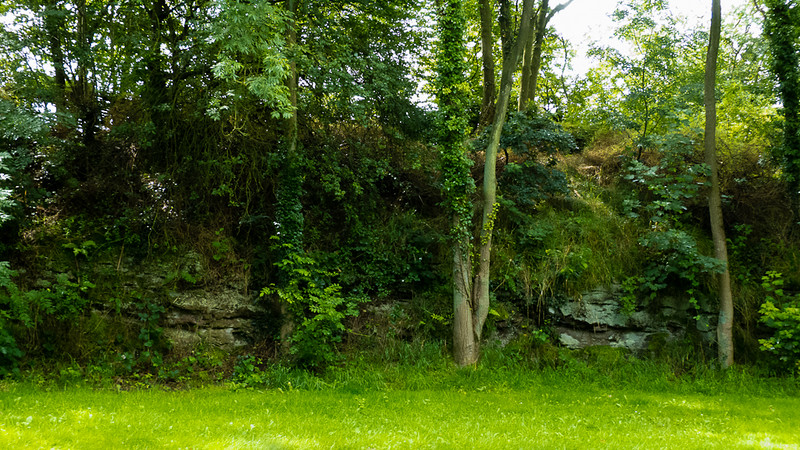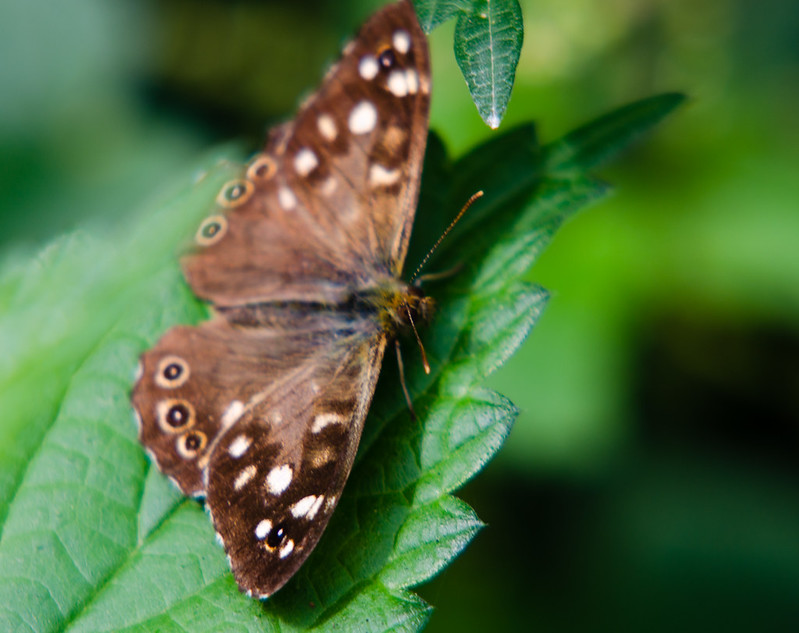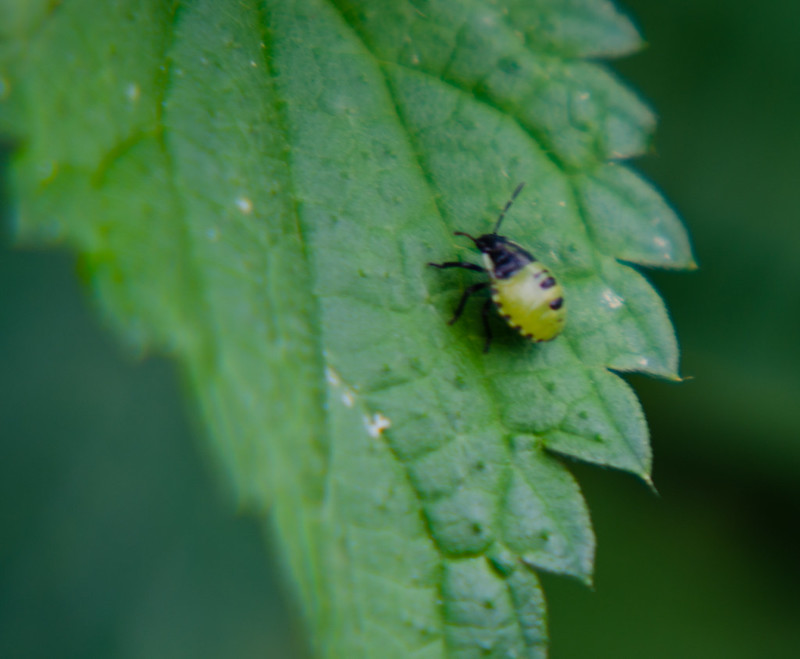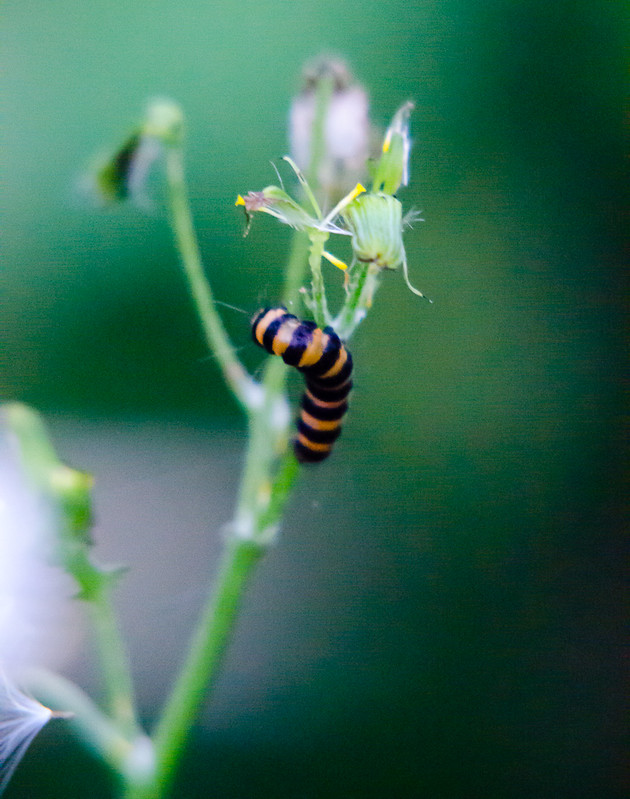
The Bromsgrove formation is one of the harder rocks which Wolverhampton rests on. The rock, which the more mature of us might know by its former name of Keuper sandstone, forms some of the highest ground in the city: the Tettenhall ridge and Bushbury, then extending from these towards Fordhouses.
Very little of this rock is actually exposed and visible within Wolverhampton’s boundaries (probably the biggest exposure is the Pendeford Rockin’). A little further north, on the road which connects Fordhouses and Pendeford to Bilbrook, there is a high point with a long exposure, probably where a cutting was made to smooth the gradient of the road.

The top picture is a close-up showing some of the mosses and lichens which have colonised the rock face. By chance, it happens to have missed the larger pebbles which are among the material which was composited to make the rock.
The second picture is taken from across the road, showing how the entire exposure is well on the way to becoming overgrown.
The dull brownish colour of the rock is very different to the bright sandy red of the immediately underlying rock, the Wildmoor formation (old name: Bunter sandstone) which can be seen in the valley of the Smestow, lower on the Tettenhall ridge or on Finchfield hill.

















